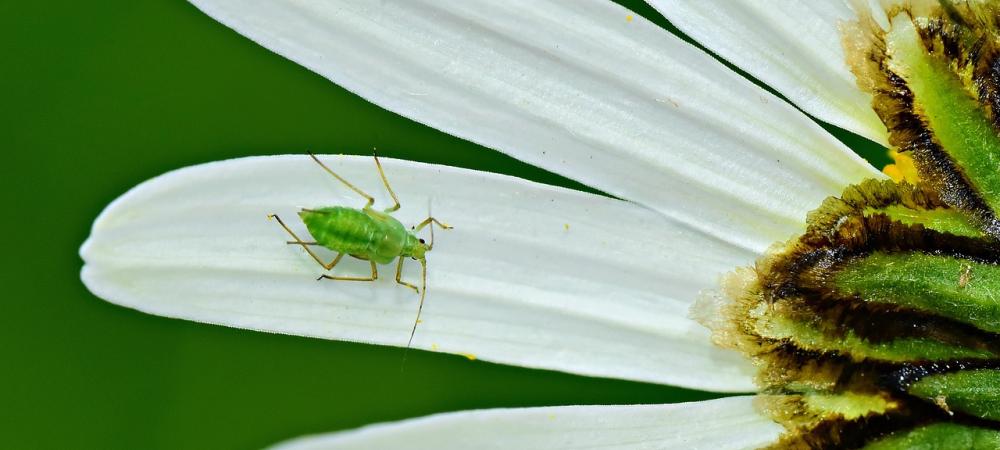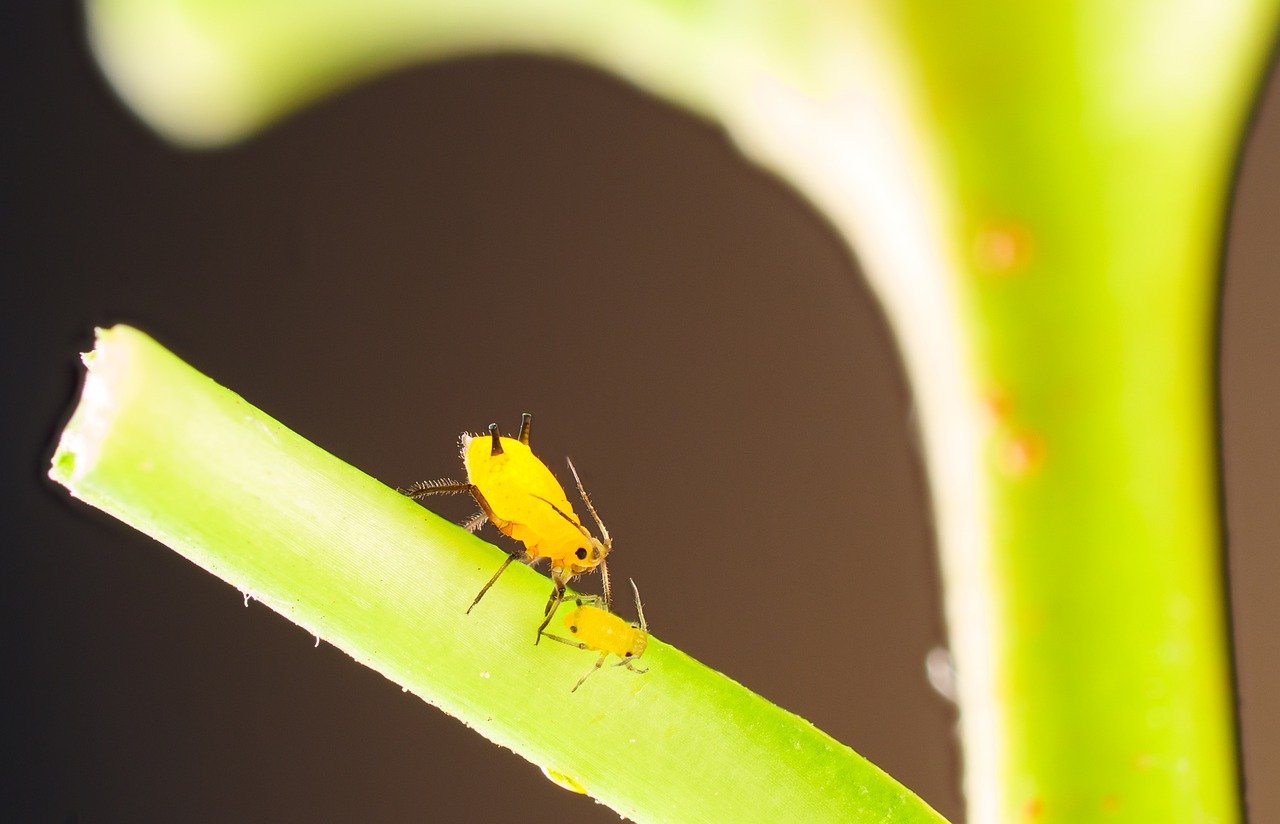How To Get Rid of Aphids in Florida

Florida's warm and humid climate provides an ideal habitat for a variety of garden pests, and among them, aphids take center stage. These small, sap-sucking insects can wreak havoc on your beloved plants, causing stunted growth, distorted leaves, and even the transmission of plant diseases. In this blog, we will delve into the world of aphids in Florida, exploring their characteristics, impact, and effective strategies to get rid of aphids, allowing your garden to flourish.
What Are Aphids?
Aphids, scientifically known as Aphidoidea, are prevalent in Florida's gardens, landscapes, and agricultural fields. These small, soft-bodied insects, typically ranging from 1 to 10 millimeters in size, come in various colors such as green, brown, black, or translucent. While numerous aphid species exist in the state, several common ones tend to infest plants across Florida.
Common Types of Apids in Florida
Florida is home to various species of aphids that can be found infesting plants in the state. Some common types of aphids in Florida include:
- Green Peach Aphid (Myzus persicae): This aphid species is widely distributed and feeds on a variety of plants, including peaches, citrus, and various vegetables. They are small, pale green insects that can reproduce rapidly. They cause damage through sap-sucking and the transmission of plant viruses.
- Melon Aphid (Aphis gossypii): Melon aphids are known for their wide host range, infesting plants such as melons, cucumbers, squash, and many ornamental plants. They are typically green or yellow and can reproduce quickly, leading to population explosions under favorable conditions.
- Cotton Aphid (Aphis gossypii): As the name suggests, cotton aphids primarily infest cotton plants, but they can also be found on other crops like beans, citrus, and ornamental plants. These small, soft-bodied aphids vary in color from pale yellow to green or pink.
- Cowpea Aphid (Aphis craccivora): Cowpea aphids are common pests of leguminous crops, including cowpeas, beans, and peas. They are small, dark brown to black aphids and can cause damage to plants by depleting sap and secreting honeydew.
- Citrus Aphid (Toxoptera citricida): Citrus aphids are a common pest of citrus trees in Florida. Small, yellowish-orange aphids infest new growth, causing distorted leaves and stunted shoots. Citrus aphids can also transmit viral diseases to citrus trees.
- Oleander Aphid (Aphis nerii): The oleander aphid is often found on oleander plants, but it can also infest milkweed and other ornamental plants. These aphids are usually light yellow or pale green and form dense aphid colonies on the undersides of leaves, causing leaf distortion and yellowing.
- Wooly Aphid (Eriosoma lanigerum): Wooly aphids, also known as woolly apple aphids, are often found infesting apple trees and other deciduous trees. They are characterized by their fluffy, waxy white appearance, resembling tiny balls of cotton. They can damage trees by feeding on plant sap and producing honeydew.

Aphid Damage
Aphids pose a significant threat to plants due to their feeding habits and ability to reproduce rapidly. These voracious pests extract plant sap by inserting their needle-like mouthparts into leaves, stems, and buds. As they feed, aphids weaken the entire plant, leading to stunted growth, yellowing foliage, curled leaves, and distorted plant structures. Additionally, the insects can secrete a sticky substance called honeydew, which can attract ants, promote the growth of sooty mold, and further stress the plants.
How To Get Rid of Aphids Naturally
If you are struggling to gain control of aphids in your yard, consider trying some of these natural aphid removal methods:
Encourage Beneficial Insects
One of the most effective ways to control aphids is by attracting natural predators to your garden. Ladybugs, green lacewings, hoverflies, and parasitic wasps are natural enemies that feed on aphids. Plant nectar-rich flowers like dill, fennel, yarrow, and marigolds to attract aphid predators, creating a natural balance in your landscape.
Practice Companion Planting
Strategic companion planting can help deter insects. Some plant species, such as chives, garlic, onions, and mint, emit strong scents that repel aphids. Interplant these aromatic herbs and vegetables among susceptible plants to create a natural deterrent. Additionally, certain flowers, like calendula, nasturtiums, and cosmos, act as trap crops, luring aphids away from your prized plants.
Create Physical Barriers
Consider using physical barriers to prevent aphid infestations for smaller plants or vulnerable seedlings. Floating row covers, mesh netting, or even a simple layer of horticultural fleece can provide a protective shield, preventing aphids from reaching your plants while still allowing sunlight and airflow.
Use Water Spray
A strong blast of water from a garden hose can dislodge aphids from your plants. Aim the spray at the undersides of leaves, where the insects often congregate. Repeat this process regularly to keep aphid populations in check.
Make A Garlic or Pepper Spray
Make a homemade spray by steeping crushed garlic or hot peppers in water overnight. Strain the mixture and spray it on affected plants. The strong scent and compounds in these ingredients can deter aphids.
Use A Neem Oil Spray
Apply a solution of diluted neem oil to affected plants. Neem oil acts as a natural insecticide and repels aphids. Follow the product instructions for proper dilution and application.
Organic Insecticidal Soap
If aphid numbers become overwhelming, consider using insecticidal soap. This organic and environmentally friendly option coats the aphids and disrupts their protective waxy coating, leading to dehydration and death. This product can be purchased at most hardware stores. Follow the instructions on the product label carefully and apply the soap when the temperature is cool to prevent leaf damage.
Maintain Plant Health
Healthy plants are better equipped to resist aphid infestations. Provide your plants with proper nutrition, adequate water, and well-draining soil. Avoid over-fertilizing, as lush growth can attract aphids. Regularly inspect your plants for signs of stress, disease, or nutrient deficiencies, and promptly address any issues to keep them robust.
Professional Aphid Removal
Another way to get rid of aphids for good is by contacting a professional Tavares lawn care company that offers treatments for outdoor pests like aphids. Deans Services provides treatments to get rid of existing colonies and can give your landscape the care it needs to thrive. Contact our team today!
Remember, an attentive and proactive approach will help you maintain a thriving landscape that remains free from these pesky pests, allowing you to enjoy the beauty of your garden to the fullest.
FAQ About Aphids
To help you get rid of aphids for good, here is some additional information that is helpful to know about these pests:
What Time of Year Are Aphids Active?
Aphids can be active throughout the year here in Florida, but their activity typically peaks during the spring and summer months when temperatures are warmer and plants are actively growing. However, the specific timing of aphid activity can vary depending on the region and the particular species of aphids present.
What Do Aphid Eggs Look Like?
Aphid eggs are tiny and often difficult to spot without magnification. They are typically oval-shaped and vary in color depending on the species. Common colors of aphid eggs include black, brown, green, or yellow, depending on the species of aphid. The eggs are often laid in clusters on plant stems, leaves, or buds, and they may be covered with a protective waxy coating.
What Attracts Aphids To My Yard?
Aphids are attracted to plants that provide them with a suitable food source and favorable environmental conditions. They are particularly drawn to plants with succulent, tender foliage, high nitrogen levels, and lush growth. Additionally, factors like plant stress, excessive fertilization, overcrowding, and warm weather can attract aphids.
Do Aphids Have Wings?
Yes, aphids can have wings. Aphids have the ability to develop wings when populations become overcrowded or when environmental conditions change. Winged forms of aphids allow for dispersal to new plants or locations. However, not all aphids have wings, and the presence or absence of wings can vary depending on the species and circumstances.
Are Aphids Dangerous To Humans?
Aphids are not considered dangerous to humans. They do not bite humans or transmit diseases. Aphids primarily feed on plant sap and are more of a nuisance to plants rather than a direct threat to humans.
